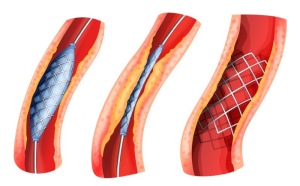Introduction
Cardiovascular disease is one of the killer diseases. It has a mortality rate, which in industrialized nations is usually the highest in the nation, yet the underlying process has only recently been better understood. The pathophysiology was studied in detail by the Framingham heart study and is still being studied now. Smoking, obesity, diabetes, heart strain from elevated blood pressure, and a low HDL cholesterol (from not getting enough exercise) have been identified as risk factors.
Magnesium deficiency
In addition it has been found that magnesium is a crucial mineral that is necessary to balance calcium and to regulate multiple enzymatic reactions in the body of which it is a limiting co-factor. Particularly our energy metabolism is dependent on enough magnesium. But magnesium is also needed to balance the electrical membrane activities of the nerve fibers inside the heart that regulate our heartbeat. 73.3% of diabetic patients with heart failure were found to have low serum magnesium levels.
Common conditions associated with low magnesium
Arrhythmias are very common when magnesium levels are low, because magnesium is necessary to reduce the excitability of the cardiac nervous system. For this reason when a patient has magnesium deficiency, atrial fibrillation, atrial flutter, premature ventricular contractions and ventricular fibrillation that can cause sudden death are more common. As little as 400 mg of chelated magnesium per day can normalize your magnesium level. Presently abut 50% of Americans are magnesium deficient.
Magnesium also keeps the lining of your arteries resilient, which helps prevent hardening of arteries, strokes and heart attacks.
Metabolic syndrome, high cholesterol and oxidized cholesterol
These multifactorial steps lead to hardening of the arteries. Further analysis of the metabolic syndrome (associated with obesity, diabetes and high blood pressure) found the following. There was an association with elevation of LDL cholesterol (the bad cholesterol) and insulin resistance. Excessive refined carbohydrate and fat intake led to that.
Oxidized LDL cholesterol
Another finding was that it is not the absolute LDL level, but rather the oxidized LDL that kills. Excessive intake of refined carbohydrates (sugar, flower, pasta, rice) is the culprit for hardening of the arteries. This initiates and maintains the process of clogging up your arteries. Oxidized LDL reacts like a free radical that attacks the lining of the arteries. This causes the deposit of fatty substances under the lining of the arteries. All of these factors and others mentioned will lead to hardening of the arteries, heart attacks, high blood pressure and strokes. Counter these factors, start exercising regularly and you will prevent hardening of the arteries!
Use of the hyperlinks get you to the detailed chapters.
Vitamin D3 for heart and brain health
Apart from the factors mentioned above, vitamin D3 is a simple, but powerful prevention of heart attacks and strokes. Dementia also can be prevented by vitamin D3. Take about 4000 to 5000 IU of vitamin D3 per day. I am explaining in this news item, based on two separate studies why.
References
1. Noble: Textbook of Primary Care Medicine, 3rd ed.,2001, Mosby, Inc.: p. 505 to 653.
2. Ferri: Ferri’s Clinical Advisor: Instant Diagnosis and Treatment, 2004 ed., Copyright © 2004 Mosby, Inc.







